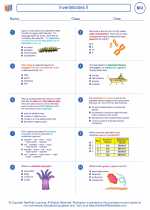Cosmic Microwave Background Radiation
The cosmic microwave background (CMB) radiation is a form of electromagnetic radiation that fills the universe and is a remnant of the Big Bang. It was first discovered in 1965 by Arno Penzias and Robert Wilson, and its discovery provided strong evidence for the Big Bang theory of the origin of the universe.
Origin
The CMB radiation originated approximately 380,000 years after the Big Bang when the universe had cooled down enough for neutral atoms to form. Prior to this, the universe was filled with a hot, dense plasma of charged particles that prevented light from traveling freely. As the universe expanded and cooled, the electrons and protons combined to form neutral hydrogen atoms, allowing light to travel through space. The CMB radiation is essentially the "echo" of the Big Bang, and it has been traveling through space ever since, gradually becoming stretched and cooled as the universe expanded.
Characteristics
The CMB radiation is in the form of microwaves, with a peak wavelength of about 1.9 mm. It has a nearly uniform temperature of approximately 2.7 Kelvin, or about -270 degrees Celsius, making it one of the coldest things in the universe. The CMB radiation is incredibly isotropic, meaning it has the same intensity in all directions, with tiny fluctuations that provide valuable clues about the early universe's structure and composition.
Significance
Studying the CMB radiation has provided critical insights into the early universe, including its age, composition, and the formation of structures such as galaxies and galaxy clusters. The tiny fluctuations in the CMB radiation, known as anisotropies, have been mapped in great detail by telescopes such as the Planck satellite and the Wilkinson Microwave Anisotropy Probe (WMAP). These observations have provided strong evidence for the current cosmological model, known as the Lambda-Cold Dark Matter (ΛCDM) model, and have led to a precise determination of key cosmological parameters, such as the age, geometry, and composition of the universe.
Study Guide
- Describe the origin of cosmic microwave background radiation and its significance in understanding the early universe.
- Explain the characteristics of cosmic microwave background radiation, including its temperature, wavelength, and isotropy.
- Discuss the significance of studying the anisotropies in the cosmic microwave background radiation and how this has contributed to our understanding of the universe's structure and composition.
- Compare and contrast the observations of the cosmic microwave background radiation made by the Planck satellite and the Wilkinson Microwave Anisotropy Probe (WMAP).
- Discuss the impact of the discovery of the cosmic microwave background radiation on the development of the Big Bang theory and the current cosmological model.
By understanding the cosmic microwave background radiation, we gain valuable insights into the origins and evolution of the universe, as well as the fundamental properties of space, time, and matter. It continues to be a key area of study in cosmology and astrophysics.
.◂Biology Worksheets and Study Guides High School. Invertebrates

 Worksheet/Answer key
Worksheet/Answer key
 Worksheet/Answer key
Worksheet/Answer key
 Worksheet/Answer key
Worksheet/Answer key
 Worksheet/Answer key
Worksheet/Answer key
 Worksheet/Answer key
Worksheet/Answer key
 Vocabulary/Answer key
Vocabulary/Answer key
 Vocabulary/Answer key
Vocabulary/Answer key
 Vocabulary/Answer key
Vocabulary/Answer key
